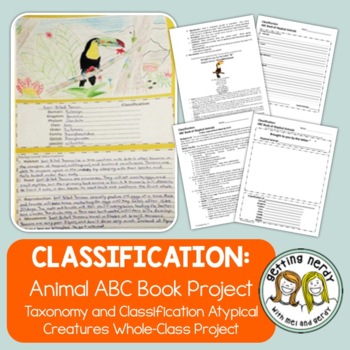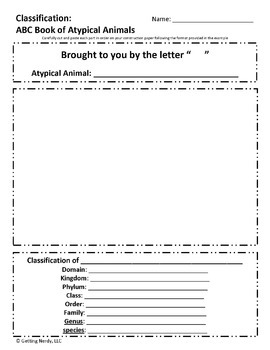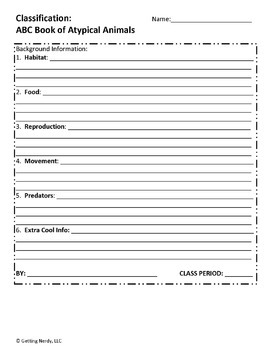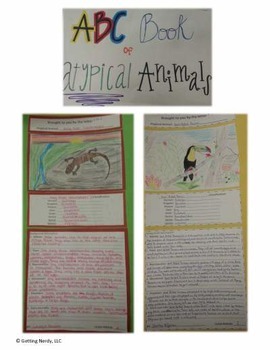Classification - Unique Animal Book Group Project
- Zip
What educators are saying
Description
Classification - Group Project - Create a Book of Interesting Animals.
In this classification and taxonomy lesson, individual students are assigned a letter and animal group as they work as a class to create an ABC book of unique animals covering a variety of animal phyla. They research their animal and create a page about the animal’s classification, habitat, eating and reproductive habits, all while focusing on specific adaptations of the animal that allow it to survive in its environment. This lesson can easily be adapted to small or large groups.
Included in this project:
* EDITABLE Student-friendly template to ensure formatting is consistent throughout the book.
* Extension questions which include classification and dichotomous key practice
* Student examples
Consider using this with some of our other products in our store:
- Classification Vocabulary Lesson
- Classification Dichotomous Key Practice: Incredulous Creatures
- Classification Interactive Notebook Six Kingdoms Puzzle
Take a look at Getting Nerdy with Mel and Gerdy‘s:
Click this link to find out how this lesson fits with your NGSS, TEKS or GSE Science Classroom
Getting Nerdy's Terms of Use (TOU):
- Purchase of the product is for single classroom use by the purchaser only. It is a violation for individuals, schools, and districts to redistribute, edit, sell, or post this item on the Internet or to other individuals. Disregarding the copyright is a violation of the Digital Millennium Copyright Act and subject to legal action.
-By purchasing this product you acknowledge that you have read and understood the Terms of Use.
Classification & Taxonomy Project: Create a Book of Atypical Animals by © 2014 Getting Nerdy, LLC





